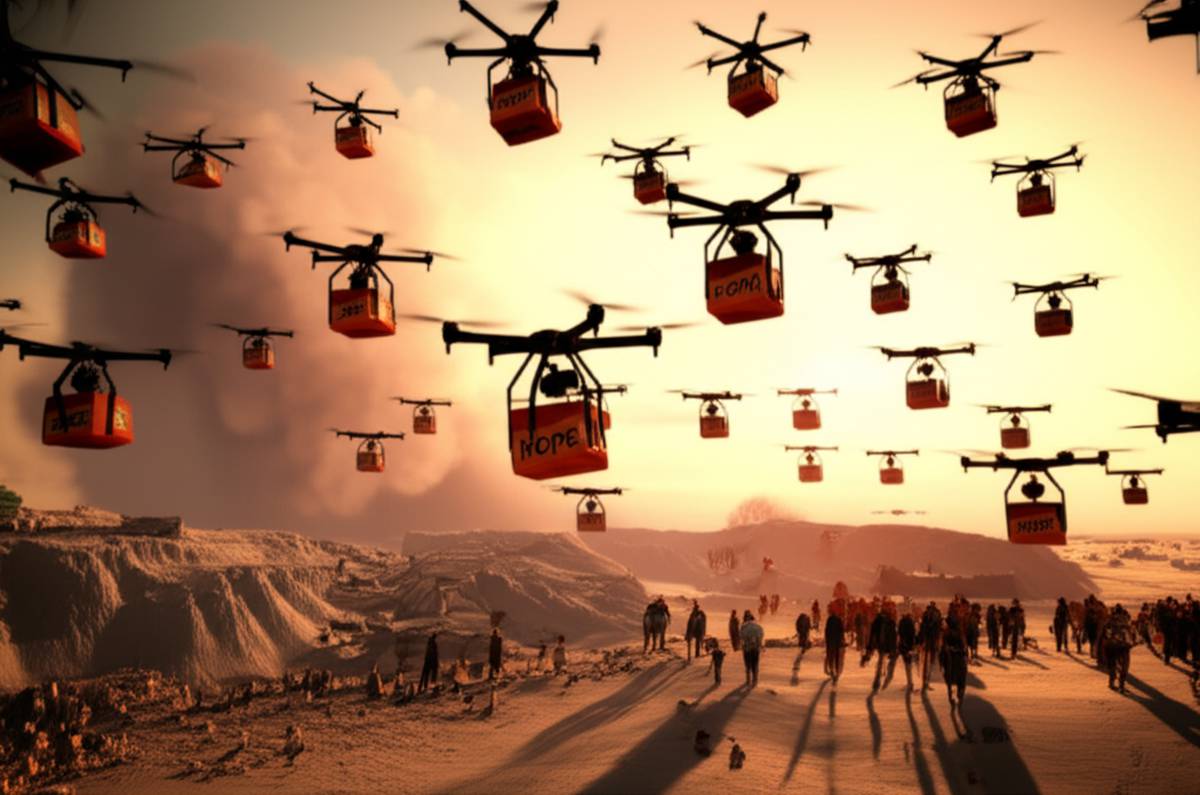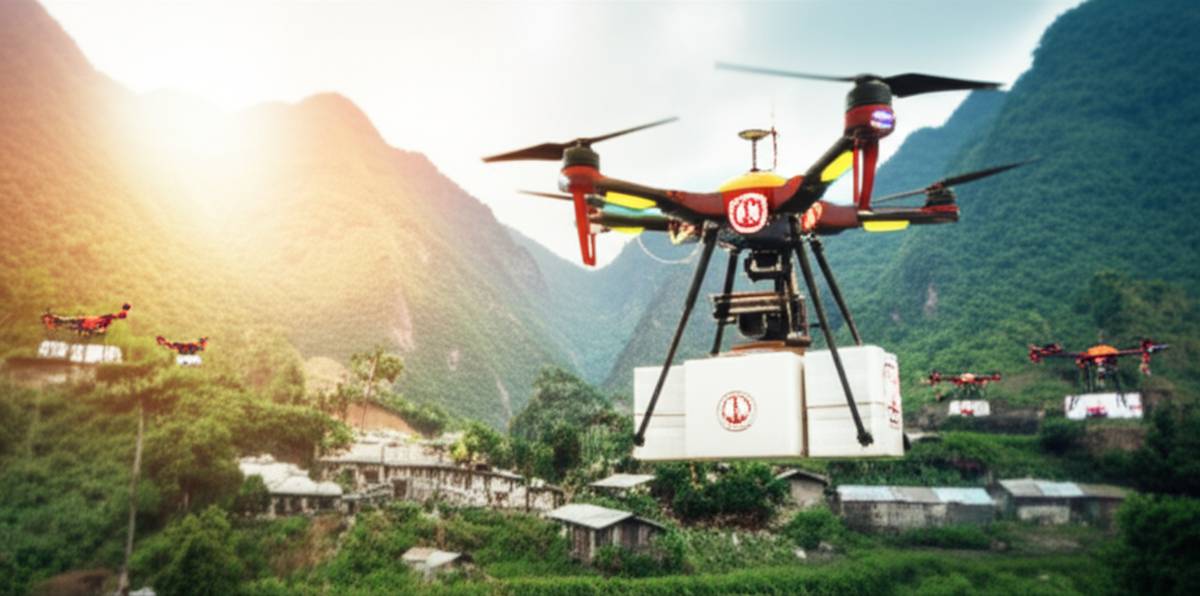In a world often filled with challenges, it’s inspiring to witness the innovative ways technology can be used to bring about positive change. At Billionmode, we champion solutions that empower people and improve lives, and that’s why we’re excited to explore the incredible potential of Drones for Hope. This isn’t just about technology; it’s about leveraging innovation to deliver aid, support communities, and build a better future for everyone. Are you ready to discover how unmanned aerial vehicles are transforming lives?
The Rise of Drones for Good
Drones, once primarily associated with military applications, are now playing an increasingly vital role in humanitarian efforts and social impact initiatives. Their ability to access remote or disaster-stricken areas quickly and efficiently makes them invaluable tools for delivering aid, conducting search and rescue operations, and monitoring environmental changes. We can use AI automation to further optimize drone delivery routes and efficiency in these critical situations.
Delivering Essential Aid to Remote Communities
One of the most significant applications of Drones for Hope is their ability to deliver essential supplies to remote communities that are difficult to reach by traditional means. Whether it’s medical supplies, food, or clean water, drones can overcome geographical barriers and provide timely assistance to those in need. Consider the mountainous regions of Nepal, where drones are used to transport medicines and vaccines to isolated villages, saving lives and improving healthcare access. This type of work is changing the world for the better, one flight at a time.
Disaster Relief and Emergency Response
In the wake of natural disasters, such as earthquakes, hurricanes, or floods, drones can be deployed to assess damage, locate survivors, and deliver emergency supplies. Their aerial perspective provides valuable insights that can inform rescue efforts and help prioritize resources effectively. Drones equipped with thermal imaging cameras can detect survivors trapped under rubble, while others can drop essential items like water, food, and blankets to those in immediate need.
For instance, after a devastating earthquake in Haiti, drones were used to map the affected areas and identify the most critical needs. This information helped relief organizations allocate resources efficiently and reach those who needed help the most. Learning about wealth building allows for the potential to invest in and expand these drone-based aid programs.
Environmental Monitoring and Conservation
Drones for Hope also play a crucial role in environmental monitoring and conservation efforts. Equipped with specialized sensors and cameras, they can track deforestation, monitor wildlife populations, and detect pollution. This data helps conservationists make informed decisions and implement effective strategies to protect our planet’s resources. Learn how to design your life to include environmental stewardship.
For example, drones are used to monitor coral reefs, assess the impact of climate change, and identify areas that require urgent conservation efforts. They can also be used to detect illegal logging activities and poaching, helping to protect endangered species and preserve biodiversity.

Addressing Challenges and Ensuring Ethical Use
While the potential of Drones for Hope is immense, it’s important to address the challenges and ensure their ethical use. Privacy concerns, safety regulations, and the potential for misuse are all factors that need careful consideration. We have to develop money mindset to properly allocate resources and maximize drone efficiency for social good.
Privacy Concerns and Data Security
The use of drones raises legitimate privacy concerns, particularly when they are equipped with cameras and sensors that can collect data on individuals and communities. It’s essential to establish clear guidelines and regulations to protect privacy and ensure that data is collected and used responsibly. Transparency and accountability are key to building trust and ensuring that drones are used for the benefit of all.
Furthermore, data security is paramount to prevent unauthorized access to sensitive information. Robust security measures should be implemented to protect data from hacking and misuse. Outbound link to Investopedia on data security is a great resource.
Safety Regulations and Airspace Management
As the use of drones becomes more widespread, it’s crucial to establish clear safety regulations and airspace management protocols to prevent accidents and ensure the safety of people and property. Drone operators should be properly trained and licensed, and drones should be equipped with safety features such as collision avoidance systems and geofencing capabilities.
Collaboration between drone operators, aviation authorities, and local communities is essential to develop effective safety regulations and airspace management strategies. This collaborative approach can help mitigate risks and ensure that drones are integrated safely into the airspace.
Preventing Misuse and Ensuring Accountability
There is a risk that drones could be used for malicious purposes, such as surveillance, smuggling, or even terrorism. It’s important to implement measures to prevent misuse and ensure that drone operators are held accountable for their actions. This includes establishing clear legal frameworks, implementing tracking and identification systems, and providing law enforcement agencies with the tools and training they need to detect and respond to drone-related threats.
The Future of Drones for Hope
The future of Drones for Hope is bright, with ongoing advancements in technology and increasing recognition of their potential to address global challenges. As drones become more sophisticated, affordable, and accessible, we can expect to see even more innovative applications emerge. Let’s start here on building a better future.
Advancements in Drone Technology
Technological advancements are driving the evolution of drones, making them more capable and versatile. Improvements in battery life, payload capacity, and autonomous flight capabilities are expanding the range of applications for drones. Furthermore, the integration of artificial intelligence and machine learning is enabling drones to perform more complex tasks, such as object recognition, obstacle avoidance, and autonomous decision-making.
These advancements will enable drones to operate more efficiently, safely, and effectively in a variety of challenging environments. This also supports digital income and entrepreneurial endeavors in the drone service sector.
Expanding Applications and Partnerships
As the capabilities of drones continue to evolve, we can expect to see them used in an even wider range of applications. From delivering vaccines to remote areas to monitoring illegal deforestation, drones are poised to play an increasingly important role in addressing global challenges. Collaboration between governments, NGOs, and private companies will be essential to unlock the full potential of Drones for Hope and ensure that they are used for the benefit of all.
Ready to Support Drones for Hope?
Join the Billionmode community and stay informed about the latest innovations and opportunities in the world of social impact. Subscribe to our newsletter today and be part of the movement to build a better future!
FAQ: Drones for Hope
What are the primary uses of drones in humanitarian aid?
Drones are primarily used for delivering medical supplies, assessing disaster damage, conducting search and rescue operations, and monitoring environmental changes. They provide access to remote areas and offer a valuable aerial perspective in emergency situations.
How are privacy concerns addressed when using drones?
Privacy concerns are addressed through clear guidelines and regulations that govern data collection and usage. Transparency and accountability are key, along with robust data security measures to prevent unauthorized access to sensitive information. Ethical considerations are paramount.
What are the future possibilities for drones in social impact?
The future holds expanding applications in areas like vaccine delivery, environmental monitoring, and precision agriculture. Advancements in drone technology, AI integration, and increased collaboration will unlock even greater potential for addressing global challenges and improving lives. Check out our blog for more information on this!
Conclusion
Drones for Hope represent a powerful convergence of technology and compassion, offering innovative solutions to some of the world’s most pressing challenges. By embracing this technology responsibly and ethically, we can unlock its full potential to deliver aid, protect the environment, and build a brighter future for all. The opportunities for good are endless!


